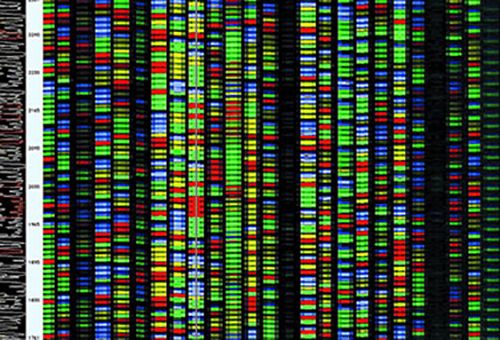Page 10920
May 4, 2016
Rich and powerful warn robots are coming for your jobs
Posted by Julius Garcia in categories: employment, robotics/AI
LOS ANGELES Some of the richest, smartest and most powerful humans have an important message for the rest of us as they convened this week to discuss pressing global issues: the robots are coming.
At the Milken Institute’s Global Conference in Beverly Hills, California, at least four panels so far have focused on technology taking over markets to mining — and most importantly, jobs.
“Most of the benefits we see from automation is about higher quality and fewer errors, but in many cases it does reduce labor,” Michael Chui, a partner at the McKinsey Global Institute, said on Tuesday during a panel on “Is Any Job Truly Safe?”
Continue reading “Rich and powerful warn robots are coming for your jobs” »
May 4, 2016
Fresh emergency organs may soon be delivered by medical drones
Posted by Shailesh Prasad in categories: biotech/medical, drones
Lung Biotechnology, a biotech firm, commissioned 1,000 medical drones that’ll deliver transplant organs to a network of hospitals pending FAA and FDA approval.

Walk around a virtual apartment or an art gallery with the Gear VR.
Demo by Interactive Lab.
May 4, 2016
Airbus Defence and Space signs contract to build Biomass – the European Space Agency’s forest mission
Posted by Andreas Matt in categories: geopolitics, space travel, treaties
1st P-band radar in space will measure the amount of biomass and carbon locked in the world’s forests and how this changes over time — Biomass satellite will provide support to United Nations treaties, notably the Reduction of Emissions due to Deforestation and Forest Degradation
Airbus Defence and Space, the world’s second largest space company has signed a contract with the European Space Agency (ESA) to build its next Earth Explorer mission, the Biomass satellite. Biomass is due to launch in 2021 and will measure forest biomass to assess terrestrial carbon stocks and fluxes for five years.
The spacecraft will carry the first space-borne P-band synthetic aperture radar to deliver exceptionally accurate maps of tropical, temperate and boreal forest biomass that are not obtainable by ground measurement techniques. The mission will collect frequent information on global forests to determine the distribution of above-ground biomass in these forests and measure annual changes. The 5-year mission will see at least eight growth cycles in the worlds’ forests.
May 4, 2016
Preparing for the Future of Artificial Intelligence
Posted by Amnon H. Eden in categories: biotech/medical, computing, health, robotics/AI
Today, we’re announcing a new series of workshops and an interagency working group to learn more about the benefits and risks of artificial intelligence.
There is a lot of excitement about artificial intelligence (AI) and how to create computers capable of intelligent behavior. After years of steady but slow progress on making computers “smarter” at everyday tasks, a series of breakthroughs in the research community and industry have recently spurred momentum and investment in the development of this field.
Today’s AI is confined to narrow, specific tasks, and isn’t anything like the general, adaptable intelligence that humans exhibit. Despite this, AI’s influence on the world is growing. The rate of progress we have seen will have broad implications for fields ranging from healthcare to image- and voice-recognition. In healthcare, the President’s Precision Medicine Initiative and the Cancer Moonshot will rely on AI to find patterns in medical data and, ultimately, to help doctors diagnose diseases and suggest treatments to improve patient care and health outcomes.
May 4, 2016
Faster, cheaper way to produce new antibiotics
Posted by Karen Hurst in category: biotech/medical
Nice
A novel way of synthesising a promising new antibiotic has been identified by scientists at the University of Bristol. By expressing the genes involved in the production of pleuromutilin in a different type of fungus, the researchers were able to increase production by more than 2,000 per cent.
With resistance growing to existing antibiotics, there is a vital and urgent need for the discovery and development of new antibiotics that are cost effective. Promising developments are derivatives of the antibiotic pleuromutilin, which are isolated from the mushroom Clitopilus passeckerianus.
These new compounds are some of the only new class of antibiotics to join the market recently as human therapeutics. Furthermore, with their novel mode of action and lack of cross-resistance, pleuromutilins and their derivatives represent a class with further great potential, particularly for treating resistant strains such as methicillin-resistant Staphylococcus aureus (MRSA) and extensively drug resistant tuberculosis (XTB).
May 4, 2016
Biogen haemophilia spin-out to develop gene therapies and long-acting factors
Posted by Karen Hurst in categories: business, life extension
The new entity will focus on a haemophilia pipeline utilising the XTEN half-life extension technology, bispecific antibodies and gene therapies.
Biogen announced yesterday it is planning to spin-out its haemophilia business into an independent, public firm based in Boston, Massachusetts by early next year.
Management said during a conference call this was the right time for a spin-out as Biogen’s haemophilia business has matured.
Continue reading “Biogen haemophilia spin-out to develop gene therapies and long-acting factors” »
May 4, 2016
Endometrial Cancer Genetic Risk Factors Double
Posted by Karen Hurst in categories: biotech/medical, genetics
The strength of genome-wide association studies (GWAS) lies in their ability to identify new disease biomarkers through large-scale genomic comparisons of afflicted individuals and unaffected controls. Now, using this powerful technique, an international collaboration of researchers has identified five new gene regions that increase a woman’s risk of developing endometrial cancer—one of the most common cancers to affect women—taking the number of known gene regions associated with the disease to nine.
Endometrial cancer affects the lining of the uterus, typically presenting as an adenocarcinoma. Endometrial cancer is the sixth most common cancer in women worldwide and is the most common cancer of the female reproductive tract in developed countries, with over 320,000 new cases diagnosed in 2012.
Investigators at the University of Cambridge, Oxford University, and QIMR Berghofer Medical Research Institute in Brisbane studied the DNA of over 7000 women with endometrial cancer and 37,000 women without cancer to identify genetic variants that affected a woman’s risk of developing the disease.
Continue reading “Endometrial Cancer Genetic Risk Factors Double” »














